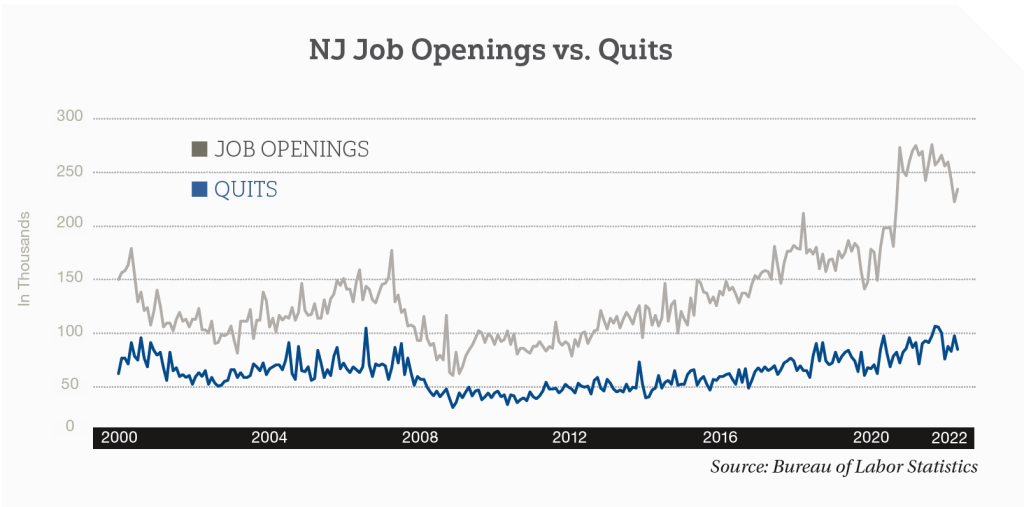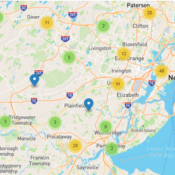NJ’s Great Resignation Accelerated in 2022
Despite greater economic uncertainty, turnover in the labor market remained at record levels throughout 2022 as New Jersey experienced record highs in both job openings and the number of workers quitting their positions.
Supplanted in recent headlines by rising interest rates and layoffs in some sectors, the “Great Resignation” that dominated economic news earlier in the pandemic appeared alive and well throughout the past year.
According to the Bureau of Labor Statistics (BLS), there were more job openings in New Jersey in January 2022 (299,000) than any month since at least December 2000 (the earliest month on record). January was not just a blip on the radar either. From January to September, New Jersey averaged 273,000 job openings per month.
Workers in the Garden State clearly took advantage of this historic job market too. More workers quit their jobs in February 2022 (112,000) than any other month on record and, like with job openings, if the average number of quits per month (97,000) holds to the end of the year, it would surpass the previous high by nearly 10,000 additional quits per month.

Although the state’s labor force remains slightly smaller than its pre-pandemic levels, most of those quitting their jobs in the past two years appear to have done so to take advantage of the hot job market and find more attractive work arrangements or better paying positions, rather than to leave the workforce entirely. Whether that decision has paid off for those workers, however, remains an open question.
A national survey of those who quit their jobs in 2021 conducted by Pew Research Center in February found that 56% of respondents said they were making more money in their new position, and 53% said they now have more opportunities for advancement.
However, roughly 20% of respondents in a separate Harris Poll survey for USA Today said they regretted having quit their jobs since the start of their pandemic, and approximately one-third of all respondents were already searching for a new position.
Further research is needed to evolve our understanding of which workers are quitting to seek more advantageous positions and which have withdrawn from the labor market entirely. This information coupled with more demographic breakdowns of who is quitting and why will be critical to understanding the state of our labor force.




